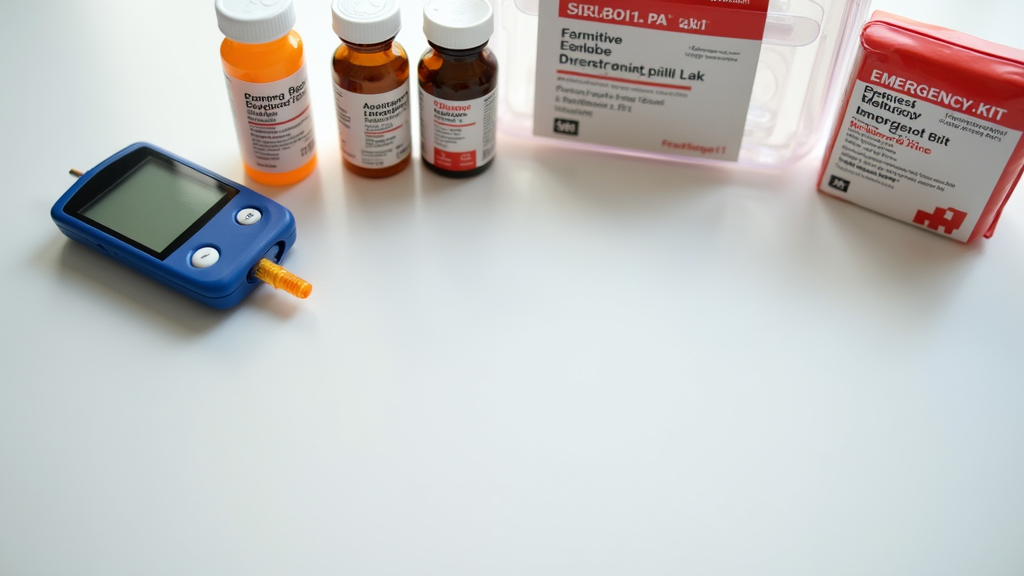Introduction
Living with diabetes related neuropathy presents unique challenges, particularly when it comes to staying active safely. Exercise is a powerful tool for managing symptoms, improving circulation, reducing pain, and supporting blood sugar regulation. However, without proper precautions, physical activity can pose risks.
This guide is designed to help you incorporate safe exercise for diabetes related neuropathy into your routine. By understanding the impact of neuropathy on movement, recognizing beneficial exercises, and learning how to adapt workouts to your specific needs, you can confidently maintain an active and healthy lifestyle. Remember, finding safe exercise for diabetes related neuropathy is key to enhancing your wellbeing.

Understanding Diabetes-Related Neuropathy and Its Impact
Nerve damage from diabetes isn’t something anyone wants to deal with, but it’s the reality for many folks. This nerve damage, or neuropathy, can pop up because of high blood sugar that’s been sticking around too long. You might feel pain, weird tingling, or even muscle weakness. It’s kind of like your body refusing to stay quiet about what’s going on inside.
Knowing why these symptoms occur can help take some of the mystery out of the process, and you don’t have to face it empty-handed. Exercise comes in strong here—helping to improve blood flow, which is super important to minimize those issues and prevent them from getting worse.
While dealing with neuropathy, safety becomes the front and center. Engaging in controlled movements can keep you out of harm’s way, making sure you receive the benefits without undue risk. Navigating through these physical challenges confidently requires being informed, adaptable, and attentive to what feels right for your body. This ensures you’re not just surviving, but thriving!
Engaging in safe exercise for diabetes related neuropathy can transform your health, enabling you to enjoy life while managing your condition effectively.
The Multifaceted Benefits of Exercise for Neuropathy
Implementing safe exercise for diabetes related neuropathy into your daily routine can improve your physical and mental health, making it an essential part of your lifestyle.
You might be wondering, how exactly can exercise bring about so many benefits when dealing with something like neuropathy? Well, it’s all about how your body responds to movement—positively!
First, let’s chat about circulation. Regular movement gets the blood flowing better, and that’s crucial for healing and reducing inflammation, which often hangs around to add misery into the mix of symptoms.
Adopting a routine with safe exercise for diabetes related neuropathy not only helps manage your symptoms but also supports your overall health.
Building up those muscles doesn’t just make you stronger; it helps stabilize your body and significantly lowers the chance of falls. When your balance gets better, so does your sense of control over daily activities, freeing you to enjoy life’s moments without constant worry.
Every effort you make to engage in safe exercise for diabetes related neuropathy counts towards your health improvement journey.
Don’t forget about the mental boost. Exercising isn’t just good for your body—it’s like a brain spa day, too! Lower stress levels, improved mood, and even better sleep can all flow from keeping active. Not to mention, tackling stress is essential because it can impact blood sugar regulation.
Before starting, ensure you have a clear plan for safe exercise for diabetes related neuropathy tailored to your unique needs.
Monitoring your blood sugar levels is crucial when engaging in safe exercise for diabetes related neuropathy to ensure a safe experience.
Proper footwear is essential for anyone partaking in safe exercise for diabetes related neuropathy to prevent unnecessary injuries.
Hydration is important, especially when participating in safe exercise for diabetes related neuropathy, to avoid health issues.
And speaking of blood sugar, staying active plays a starring role in maintaining a healthy weight and helps with keeping those sugar levels in check. It’s about managing the risks that come with diabetes, making sure your journey is as smooth as possible.
Choosing the right activities for safe exercise for diabetes related neuropathy can greatly enhance your quality of life.
Swimming is a perfect option for safe exercise for diabetes related neuropathy as it offers low-impact benefits.
Incorporating strength training into your routine is also a form of safe exercise for diabetes related neuropathy that can improve your strength and resilience.
Flexibility workouts contribute to safe exercise for diabetes related neuropathy by promoting mobility and reducing stiffness.
Practicing balance exercises is essential for safe exercise for diabetes related neuropathy to help prevent falls.
Mind-body practices like yoga are excellent examples of safe exercise for diabetes related neuropathy that promote relaxation.
Each workout, whether it feels big or small, contributes to a lifestyle that champions well-being and resilience.
Listening to your body is crucial when engaging in safe exercise for diabetes related neuropathy to avoid any potential harm.
After workouts, checking your feet is an important step after safe exercise for diabetes related neuropathy to ensure there are no injuries.
Important Safety Precautions Before Getting Started
Regularly adjusting your routine and incorporating safe exercise for diabetes related neuropathy will keep you feeling your best.
Getting started safely with exercise, especially when managing diabetes related neuropathy, is all about preparation and awareness. Your first move? Have a chat with your healthcare provider. They can guide you in tailoring a plan that’s just right for your health needs.
Beginning at a slow pace is super important. It’s tempting to jump in all at once, but gradually increasing your intensity helps prevent injuries and setbacks. Keeping an eye on your blood sugar levels is also key—track them before, during, and after exercising to see how your body responds.
Foot care is often overlooked but crucial. Supportive, well-fitted shoes can save you from big headaches down the road. They help protect your feet from the impacts and strains of physical activity, reducing the risk of injuries like blisters or sores.
Ultimately, a commitment to safe exercise for diabetes related neuropathy can lead to lasting health improvements.
Staying hydrated and steering clear of extreme temperature conditions are simple yet effective strategies to keep things safe. Exercise should be challenging but never at the cost of your health. Avoid overdoing it under the sun’s glare or in freezing conditions when your body is already working hard.
Exploring Safe and Effective Exercise Routines
When it comes to moving your body without overtaxing it, choosing the right kinds of exercise makes all the difference. Aerobic exercises like walking, swimming, and cycling are great picks. Walking for 15 to 30 minutes at ease can boost your cardiovascular health while keeping things gentle on your nerves.
Into water-based activities? Swimming or water aerobics can be super effective. They support your body, reducing stress on joints and nerves while still giving your heart a good workout. Cycling, especially on a stationary bike, provides a safe and stable way to get moving without high impact.
Mixing in some strength training is another wise choice. Resistance bands or light weights offer a way to build muscle without putting too much strain on your body. Think about adding bicep curls or seated leg lifts to your routine. They’re easy to manage and can be adjusted as you progress.
Let’s not overlook flexibility exercises. Daily stretching sessions help with stiffness and mobility. Simple movements like seated hamstring stretches or ankle rolls can make a noticeable difference over time.
Balance exercises play a crucial role in protecting yourself. Try heel-to-toe walks or single-leg stands. They don’t just improve stability; they boost confidence in your everyday movements.
For those looking to engage both body and mind, consider mind body exercises like yoga and Tai Chi. These practices focus on gentle, controlled movements that enhance balance, flexibility, and relaxation, making your exercise regimen complete and balanced.
The Crucial Practice of Listening to Your Body
Your body really knows how to send signals when something’s not quite right, so paying attention is crucial. If you start feeling sharp pain, dizziness, or extreme fatigue during workouts, hit pause immediately. Those are your body’s early warnings telling you to take it easy.
After each exercise session, make it a habit to check your feet for any blisters, cuts, or redness. Diabetes-related neuropathy can sometimes dull the sensation, making injuries easy to miss. Keeping your feet in tip-top shape is necessary for staying safe and active.
Notice any changes in your routine symptoms? Don’t hesitate to adjust your exercises. Maybe swap high impact moves for gentler options, ensuring you’re comfortable all the way through.
Be proactive about reaching out for professional advice if something feels off. It’s better to keep a routine that’s effective and enjoyable rather than something that puts your health at risk. By staying attuned to your body, you’re paving the way for a healthier, happier journey.
Conclusion
Incorporating safe exercise for diabetes related neuropathy into your lifestyle is one of the most effective ways to manage symptoms, maintain mobility, and improve overall well-being. The key is to prioritize safety, listen to your body, and choose exercises that align with your unique needs.
Small, consistent steps lead to significant health improvements. Whether it’s gentle stretching, walking, or strength training, every effort contributes to better blood circulation, reduced pain, and enhanced daily functioning.
Staying committed to a safe and effective fitness routine can significantly impact how you manage diabetes related neuropathy. Keep tracking your progress, celebrate the wins, and seek guidance when needed. Your health journey is personal, and finding the right balance will help you stay active, independent, and thriving.
Additional Resources
Be sure to check out our YouTube Channel! While you’re at it, we have some must reads recommended by our Dudes, such as, Understanding A1c Test Results or Diabetes Diet And Meal Plan.





